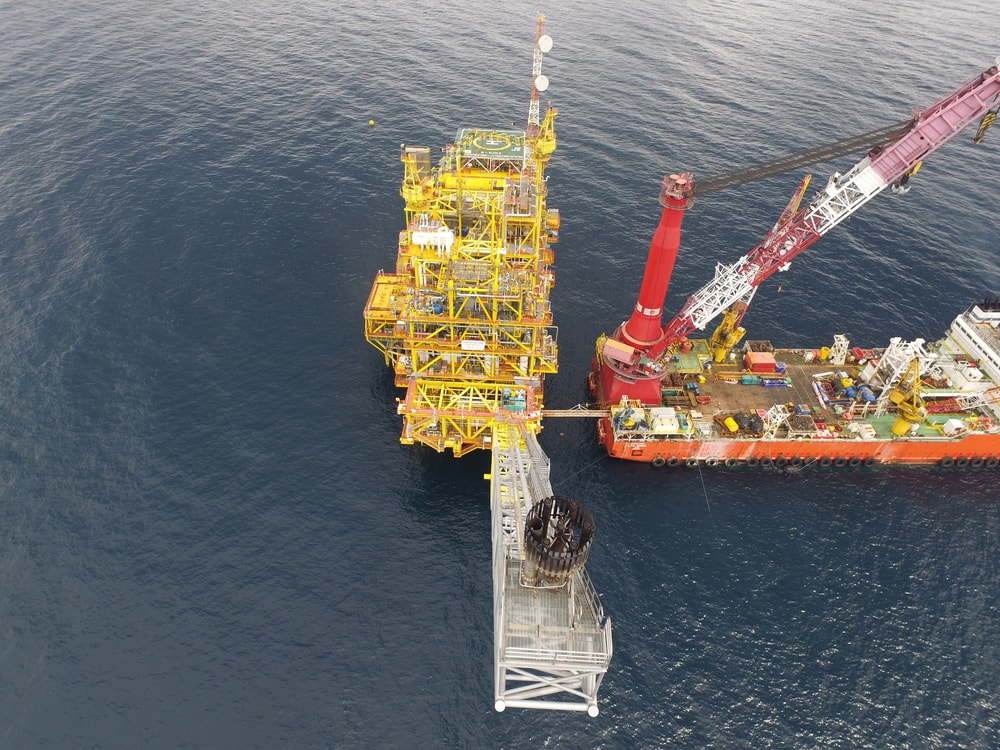A Spill-Response Aerial Imagery Plan Is a Priority

Responding to an at-sea oil spill requires multiple efforts, some that occur simultaneously and some that are deployed over a linear time frame. Knowing what your goals are is the first challenge. Finding and accumulating the right data to define that and establish finite, clear benchmarks is much easier if you develop a comprehensive strategy that includes a detailed aerial imagery work plan.
Aerial imagery done poorly can waste tremendous amounts of time and create a swamp of clutter that is only partly useful. But an aerial imagery collection and collation effort that marches (and flexes) according to an intelligently designed and thoughtfully disseminated work plan can save both human and financial assets while also providing visuals that support a transparent public relations outreach. The Aerial Imagery Technical Working Group that worked on the BP Deepwater Horizon spill prepared a work plan in 2013 that serves as a nice—and somewhat condensed—guide for spill-response teams that want to get smart on the role of overhead imagery before it is needed.
The Basics of a Plan
An aerial imagery work plan isn’t only about visuals you obtain of the incident as it progresses. On the contrary, mapping pre-incident coastlines and waters provides the baseline a company needs to define “success.” Coastal habitats of concern must be classified. A determination of submerged aquatic vegetation and marine life must be made. Collection assets (and costs) must be identified and secured. And all this must be done in cooperation with other spill-response working groups, local businesses and authorities, regulators, insurers, and community and global special-interest organizations.
The best start is to identify the types of remotely sensed imagery required to support a natural resource damage assessment and to line those up to affect your desired outcome—which normally means putting things back the way they were before the oil spill (or better).
Government agencies and private imagery collection companies have likely already acquired visual data of the area the spill is affecting or is likely to affect. These digital images are key in establishing a baseline environment to either protect or restore. Many are available online, so put someone on your response team who knows how to access that data.
The collection at the event site and at sites that are expected to experience damage can be done in a variety of ways, many of which have been mentioned in our previous blogs. Since not every spot of potential landfall or aquatic damage can be collected simultaneously, assets must be deployed in priority order, but that order must be built with flexibility since weather and other external factors could freeze out the collection in certain high-priority areas while leaving lower-priority regions available. A well-thought-out plan can prevent willy-nilly reassignment of assets at the last second.
Depending on what your response-evaluation team needs to know (oil density, distribution, the speed of spread, coastal or submarine habitats, etc.) there will be different imagery characteristics required. Those include but aren’t limited to pixels, color, data format, infrared requirements and georeferencing of collected data. The data collected must be comparable, or at least imagery analysts must know enough to make comparisons using vastly different data—that is, they must know how the collection method influences the visual output. New satellite imagery can complement overflights, but it is expensive; so requests must be weighed against budgets.
Managing the Data
Any oil spill response will generate large amounts of data, so make controlling the flow, archiving, and dissemination of pre- and post-event imagery a detailed and regimented process within your plan. Retrieval of data isn’t instantaneous, and permissions must be granted to access images. Someone has to own this entire process and know the lag time between collection and availability for analysis. Who is tasked with making sure data are loaded, cataloged, archived and analyzed? Name that person in your plan.
Keep in mind that receiving and archiving the images is just one aspect of the process. Many images will have to be collated to create a broad view of the area. Assembling tiles and retrieving them for later use requires perfect naming conventions. Put the word “inventory” in someone’s job description, and make sure it gets done and there is a recorded chain of custody.
Collaborating With Other Technical Working Groups
During the response, multiple working groups will be using visual data. Early in your response process, you need to establish a data sharing protocol, keeping in mind that the response teams will not be the only ones demanding access: company trustees, watchdog bodies, reporters, and legislators have been known to request eyes on. That said, untrained viewers could easily misinterpret what they are seeing, which could create a media firestorm or regulatory interference that is completely unnecessary and utterly distracting.
Overstepping analytic parameters and readdressing decisions can happen, so keep all stakeholders in the cleanup and containment response informed and in good working relationships. Take a look at the Aerial Imagery Working Group’s plan to familiarize your company with the basics. Starting from a position of knowledge will be of great benefit should you be liable for an at-sea oil spill.
About Water Quality Insurance Syndicate
Since 1971, WQIS has been involved in more vessel pollution events than any other marine pollution provider. Having the right team immediately available in the event of a loss is crucial for mitigating damages, getting clients back to an operational status and the claims process. Our team is made up of an extensive network of trusted professionals to assist from the moment a spill occurs until the spill is cleaned up. For more information about our insurance solutions and services, call us at 212-292-8700.
SOURCE: https://www.doi.gov/sites/doi.gov/files/migrated/deepwaterhorizon/adminrecord/upload/2013_03_15_AERIAL_Aerial_Imagery_Assessment_Work_Plan_FINAL-1.pdf
